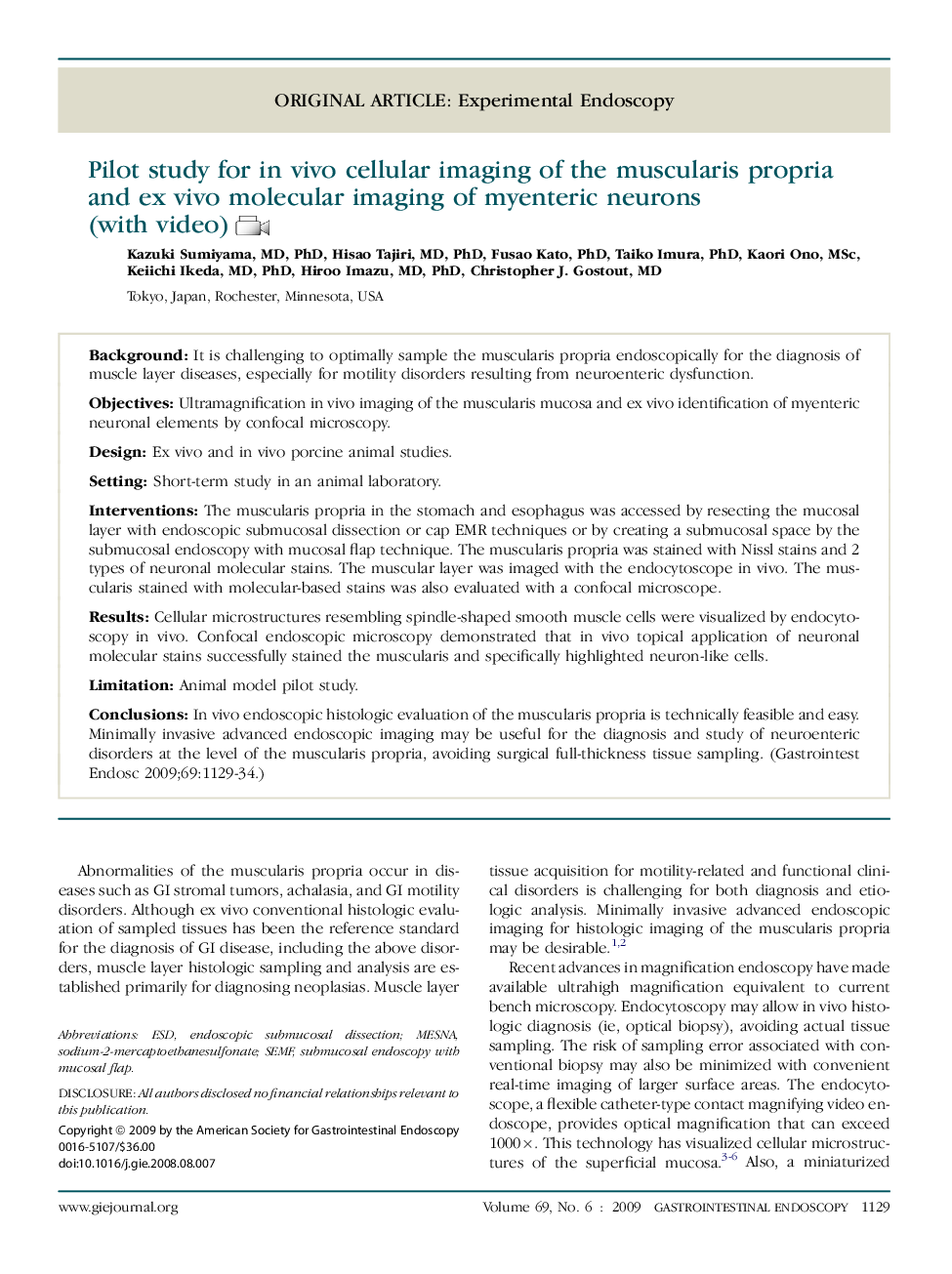| Article ID | Journal | Published Year | Pages | File Type |
|---|---|---|---|---|
| 3308115 | Gastrointestinal Endoscopy | 2009 | 6 Pages |
BackgroundIt is challenging to optimally sample the muscularis propria endoscopically for the diagnosis of muscle layer diseases, especially for motility disorders resulting from neuroenteric dysfunction.ObjectivesUltramagnification in vivo imaging of the muscularis mucosa and ex vivo identification of myenteric neuronal elements by confocal microscopy.DesignEx vivo and in vivo porcine animal studies.SettingShort-term study in an animal laboratory.InterventionsThe muscularis propria in the stomach and esophagus was accessed by resecting the mucosal layer with endoscopic submucosal dissection or cap EMR techniques or by creating a submucosal space by the submucosal endoscopy with mucosal flap technique. The muscularis propria was stained with Nissl stains and 2 types of neuronal molecular stains. The muscular layer was imaged with the endocytoscope in vivo. The muscularis stained with molecular-based stains was also evaluated with a confocal microscope.ResultsCellular microstructures resembling spindle-shaped smooth muscle cells were visualized by endocytoscopy in vivo. Confocal endoscopic microscopy demonstrated that in vivo topical application of neuronal molecular stains successfully stained the muscularis and specifically highlighted neuron-like cells.LimitationAnimal model pilot study.ConclusionsIn vivo endoscopic histologic evaluation of the muscularis propria is technically feasible and easy. Minimally invasive advanced endoscopic imaging may be useful for the diagnosis and study of neuroenteric disorders at the level of the muscularis propria, avoiding surgical full-thickness tissue sampling.
